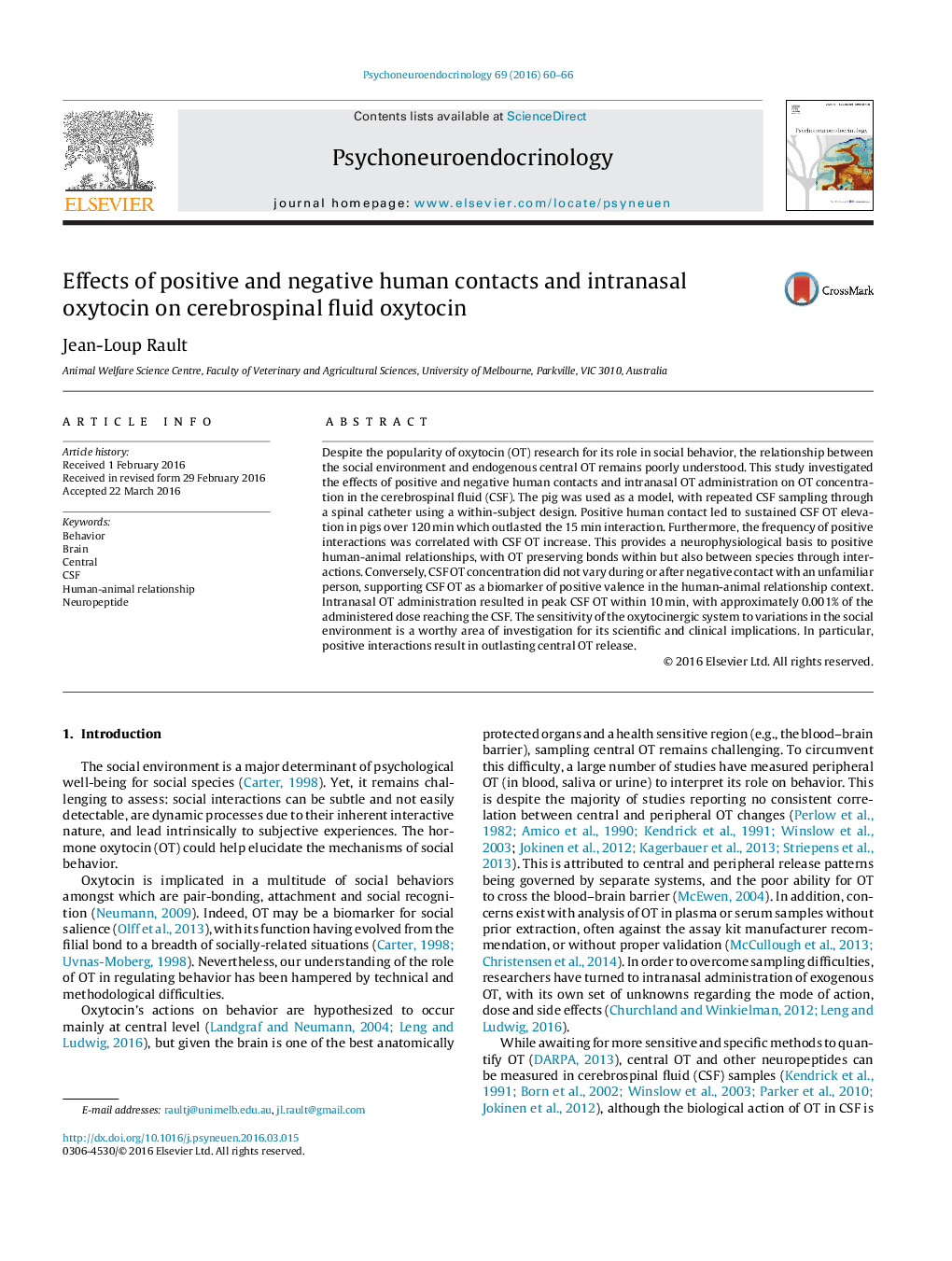| Article ID | Journal | Published Year | Pages | File Type |
|---|---|---|---|---|
| 6818101 | Psychoneuroendocrinology | 2016 | 7 Pages |
Abstract
Despite the popularity of oxytocin (OT) research for its role in social behavior, the relationship between the social environment and endogenous central OT remains poorly understood. This study investigated the effects of positive and negative human contacts and intranasal OT administration on OT concentration in the cerebrospinal fluid (CSF). The pig was used as a model, with repeated CSF sampling through a spinal catheter using a within-subject design. Positive human contact led to sustained CSF OT elevation in pigs over 120Â min which outlasted the 15Â min interaction. Furthermore, the frequency of positive interactions was correlated with CSF OT increase. This provides a neurophysiological basis to positive human-animal relationships, with OT preserving bonds within but also between species through interactions. Conversely, CSF OT concentration did not vary during or after negative contact with an unfamiliar person, supporting CSF OT as a biomarker of positive valence in the human-animal relationship context. Intranasal OT administration resulted in peak CSF OT within 10Â min, with approximately 0.001% of the administered dose reaching the CSF. The sensitivity of the oxytocinergic system to variations in the social environment is a worthy area of investigation for its scientific and clinical implications. In particular, positive interactions result in outlasting central OT release.
Related Topics
Life Sciences
Biochemistry, Genetics and Molecular Biology
Endocrinology
Authors
Jean-Loup Rault,
